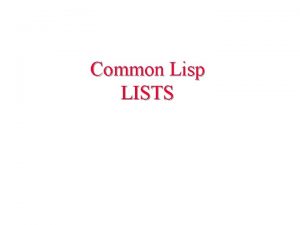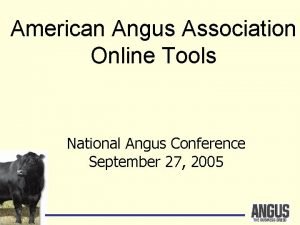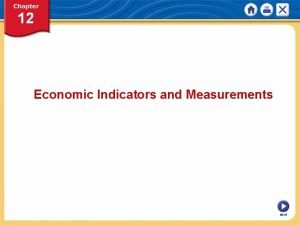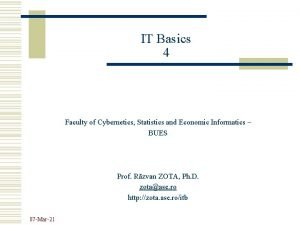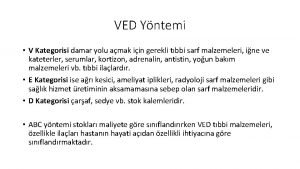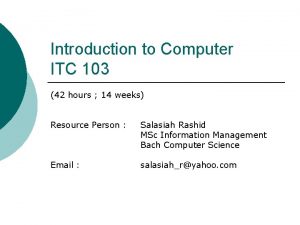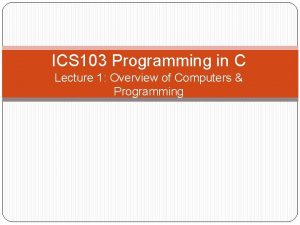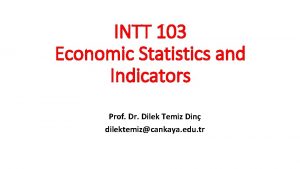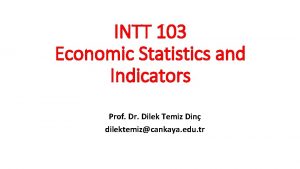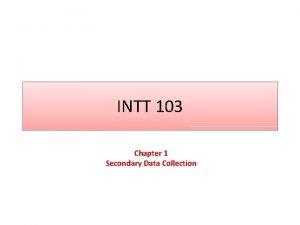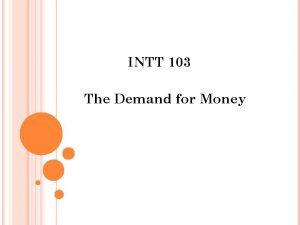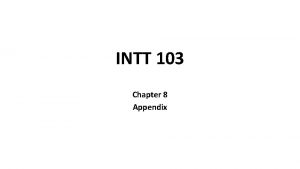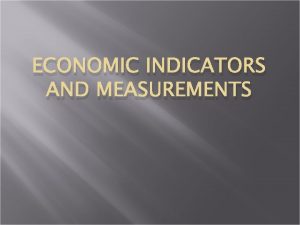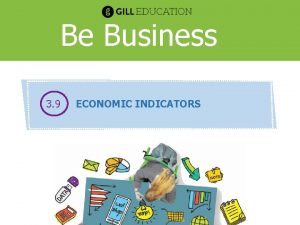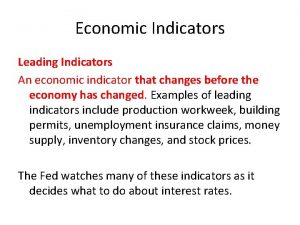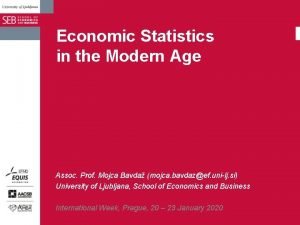INTT 103 Economic Statistics and Indicators Assoc Prof














- Slides: 14

INTT 103 Economic Statistics and Indicators Assoc. Prof. Dr. Dilek Temiz Dinç International Trade Department dilektemiz@cankaya. edu. tr

Teaching Sources Main Source: STATISTICS FOR ECONOMISTS: A BEGINNING John E. Floyd University of Toronto July 2, 2010

Second Source: IBM SPSS Statistics 23 Brief Guide

Third Source: EViews 10 (or 9) User’s Guide http: //www. eviews. com/helpintro. html#page/content%2 Fhelpintro. html%23

2. Supporting Source: Marketing Research an Applied Approach Naresh Malhotra , Daniel Nunan and David F. Birks Fifth Edition, Pearson, 2017


3. Supporting Source: Pazarlamada Araştırma Teknikleri Prof. Dr. Mahir Nakip Seçkin Yayın Evi Üçüncü Baskı, 2013


Description of this course… This course is to provide students with the necessary toolkit (araç) to analyze and extract information from economic indicators and statistics. There are huge amounts of numerical data in economics such as inflation, growth, interest rates and so on. These data must be analyzed in order to extract the necessary information to guide decisions. We will concentrate on economic indicators to include fiscal, monetary and trade (i. e, the balance of payment accounts, exchanges rates etc. ) indicators in this course.

This Course Gives What to the Students? 1. Some basic information about classification of the statistical variables and statistical methods 2. Calculating and using descriptive statistics in economics and business 3. Using SPSS and EViews in calculating descriptive statistics 4. Using SPSS and EViews to draw statistical graphs 5. How to use or calculate ındex numbers in economical data base 6. How to use regression analysis in economics and business sciences by using SPSS and EViews 7. How to use correlation analysis in economics and business sciences by SPSS and EViews

Mid term exam Style: Classic, Weight: 30% Final exam Style: Classic, Weight: 50% Assignment and presentation Style: Short essay, solving statistical problems, short research paper and group presentation, Weight: 20%

Office Hours: Tuesday: 13: 20 -14: 10 Wednesday: 09: 20 -10: 10 Grading Policy: 30% Midterm exam 20% Assignment and presentation 50% Final Exam

The main objectives of this course are 1. Understanding of the main concepts, indicators and statistics employed within the field of economics. 2. Ability to a. Understand interpret economic information presented in textual, numerical or graphical form b. Select and apply economic concepts and principles to explain and analyze contemporary events at the micro and macro levels c. Make interpretations and valid inferences from information presented and evaluate the reliability of information given d. Organize and communicate economic ideas and arguments in a clear, logical and appropriate form.

Course outline… 1 Introduction 2 Data Analysis, Summarizing Numerical Information 3 Data Summarization : Frequency Distributions 4 Data Summarization : Measures of Central Tendency and Variability 5 Index Numbers, Index Calculations 6 Index Numbers, Index Calculations 7 Mid-term Examination 8 Introduction to Simple Linear Regression and Correlation 9 Monetary Statistics 10 Public Finance 11 Exchange Rate, Purchasing Power Parity 12 Balance of Payments 13 Presentations 14 Presentations
 Common lisp sort
Common lisp sort American angus assn
American angus assn Chapter 12 economic indicators and measurements
Chapter 12 economic indicators and measurements Cybernetics statistics and economic informatics
Cybernetics statistics and economic informatics What is economic growth and development
What is economic growth and development Introduction to statistics what is statistics
Introduction to statistics what is statistics Economic growth vs economic development
Economic growth vs economic development Economic systems lesson 2 our economic choices
Economic systems lesson 2 our economic choices Ved yöntemi
Ved yöntemi Tu-103
Tu-103 103 analizi nedir
103 analizi nedir Psalm 103 1 5
Psalm 103 1 5 Factors of 101 to 200
Factors of 101 to 200 Itc 103
Itc 103 Ics 103
Ics 103
